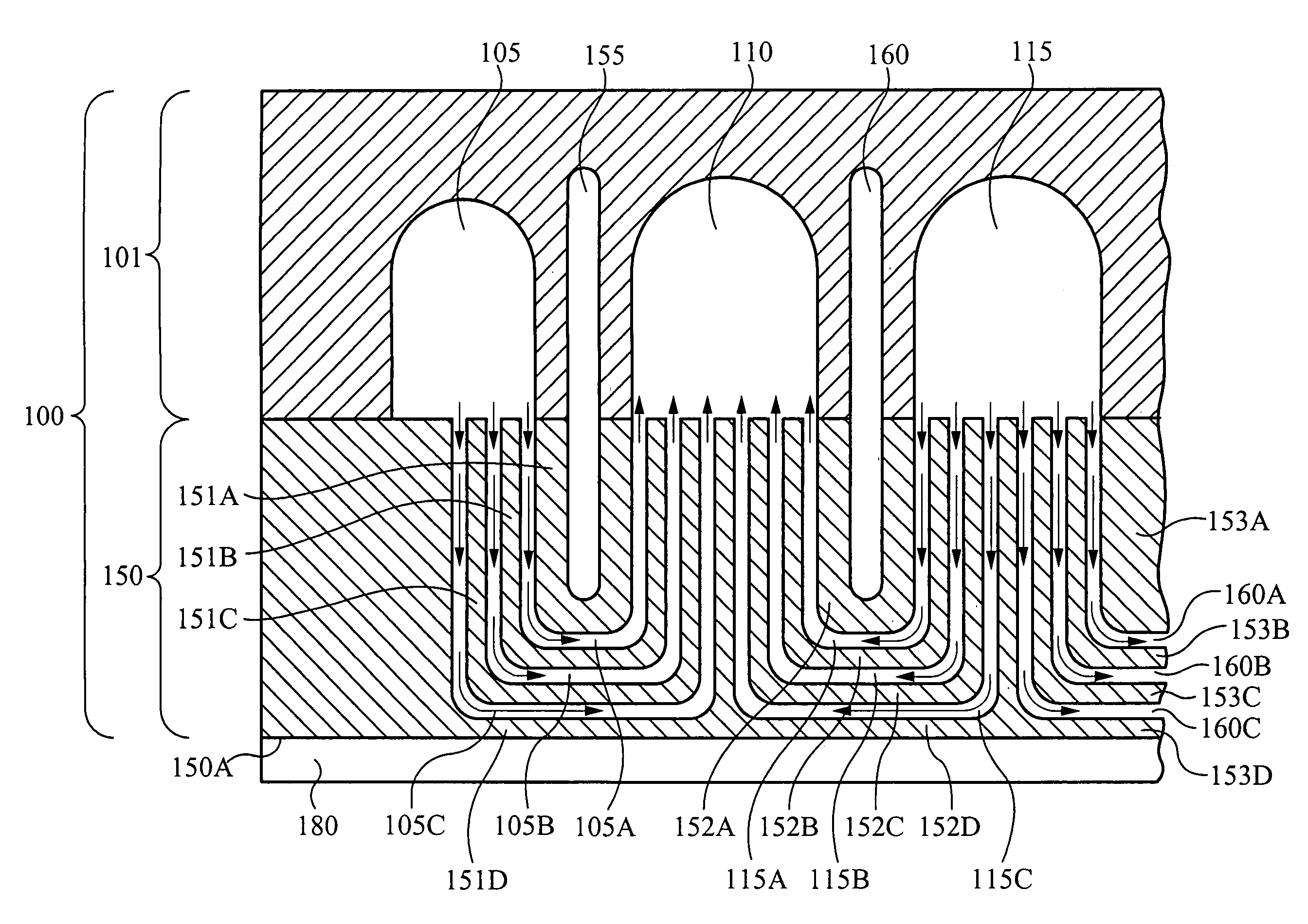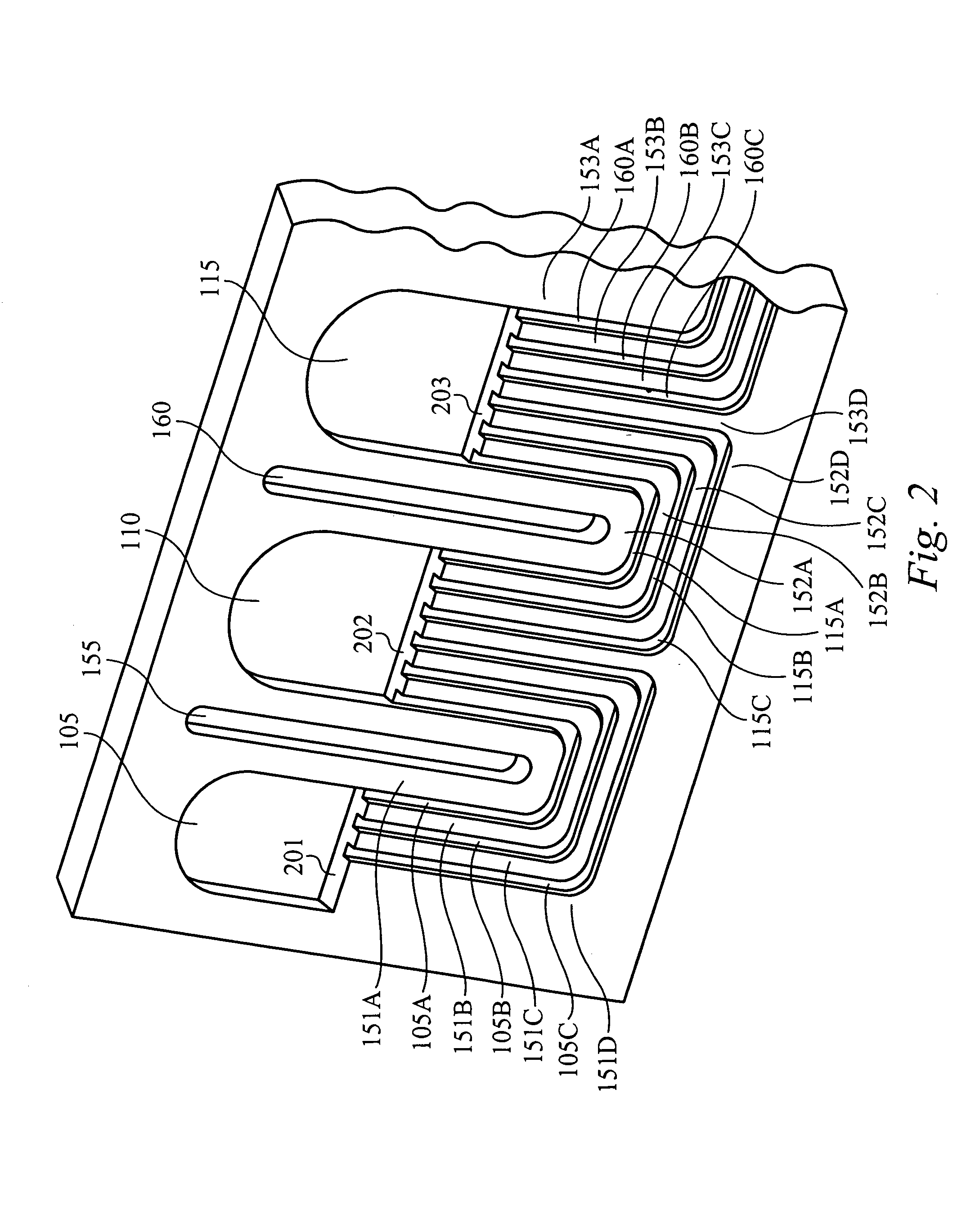Multi-level microchannel heat exchangers
- Summary
- Abstract
- Description
- Claims
- Application Information
AI Technical Summary
Benefits of technology
Problems solved by technology
Method used
Image
Examples
Embodiment Construction
[0028]FIG. 1 is a side cross-sectional view of a section of a heat exchanger 100, in accordance with one embodiment of the present invention, coupled to a heat-generating device 180. The heat exchanger 100 comprises a manifold layer 101 coupled to an interface layer 150. In operation, a cooling (i.e., heat-absorbing) material is introduced into a portion of the manifold layer 101, is transmitted through channels in the interface layer, where it absorbs heat generated by the heat-generating device 180, is transmitted to another portion of the manifold layer 101, and is extracted from the heat exchanger 100. By absorbing and carrying away heat generated by the heat-generating device 180, the cooling material cools the heat-generating device 180. As used herein, the surface at which the heat exchanger couples to a beat-generating device is referred to as a heat-exchanging plane. It will be appreciated that the heat-exchanging plane can be planar or substantially planar, or it can have ...
PUM
 Login to View More
Login to View More Abstract
Description
Claims
Application Information
 Login to View More
Login to View More - R&D
- Intellectual Property
- Life Sciences
- Materials
- Tech Scout
- Unparalleled Data Quality
- Higher Quality Content
- 60% Fewer Hallucinations
Browse by: Latest US Patents, China's latest patents, Technical Efficacy Thesaurus, Application Domain, Technology Topic, Popular Technical Reports.
© 2025 PatSnap. All rights reserved.Legal|Privacy policy|Modern Slavery Act Transparency Statement|Sitemap|About US| Contact US: help@patsnap.com



